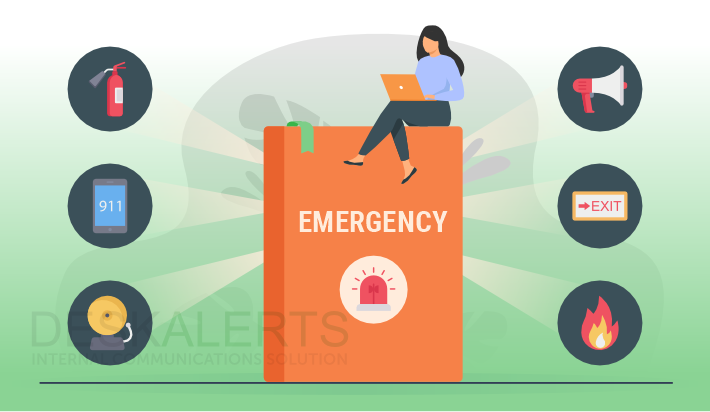If recent polls are to be believed, then it can be said that most businesses aren’t ready for a natural disaster. One survey conducted by Office Depot showed that 7 out of 10 small and medium enterprises don’t have an emergency preparedness plan in place. Another survey, this time by another office supplies retailer, Staples, showed that that 60 percent of employers said they don’t have safety plans.
It’s a bit scary to think of the possible scenarios considering that natural emergencies can strike anytime, anywhere. An earthquake can cause considerable damage to any business, whether it’s a small firm or a Fortune 500 company. Storms and hurricane can also displace employees and disrupt business operations. And we’re not even talking of other emergencies such as fire and terrorist attacks.
Emergency Action Plan
An emergency action plan is a good way for any company to protect its workers and business during an emergency. In developing this type of plan, it is a good idea to focus at the various emergencies that may potentially happen in the workplace. The emergency action plan should be tailored to the office, taking into consideration all potential sources of emergencies.
Ideally, the plan should have the following components:
- Emergency communication system.
- Emergency escape procedures and route assignments.
- Assembly location.
- Rescue and medical duties for employees trained to perform them.
Aside from these components it may be helpful to include in the emergency action plan a designated site of communication in the event of fire or explosion, and a secured location for storing original or duplicate copies of important documents.
Emergency Communication System
An integral component of any emergency action plan is an emergency communication system. This simply pertains to the way the company will alert its employees to take action, such as evacuating the office premises, or how to report emergencies when needed.
There are different ways to alert employees during an emergency. Some companies use the PA system to inform the rest of the organization, although this can be quite risky as it can cause panic among the employees. A more modern way is the use of desktop alert systems as the emergency alert can be seen by office-based workers who are always in front of their PC screens. Others chose the traditional route with fire alarms.
Whatever the type of emergency communication system a company has, what is more important is that the entire organization, from the highest ranking official down to the lowest ranking, is aware of it. Moreover, they should recognize the communication tool as a signal to evacuate the work areas as identified in the emergency action plan.
Employee Training
A company may have an emergency action plan in place, but it won’t serve its purpose if the employees themselves are clueless on what to do during an emergency. As such, it is important that employees are educated about the types of emergencies that may happen in the workplace, and train them in the proper course of action.
In most organizations, one way to facilitate employee training is to form an emergency response team. This is composed of selected employees who are trained to respond during an emergency, from rescuing other colleagues to giving first aid treatment. They’ll receive basic training on the use of emergency equipment such as fire extinguisher.
In turn, these employees will help in educating their colleagues in emergency preparedness, from evacuation, shelter, and accountability, to emergency shutdown procedures, among others.
In conclusion, an emergency action plan can go a long way towards preventing the loss of lives and disruption of business operations. There is simply no reason why any firm can’t have this type of plan.






